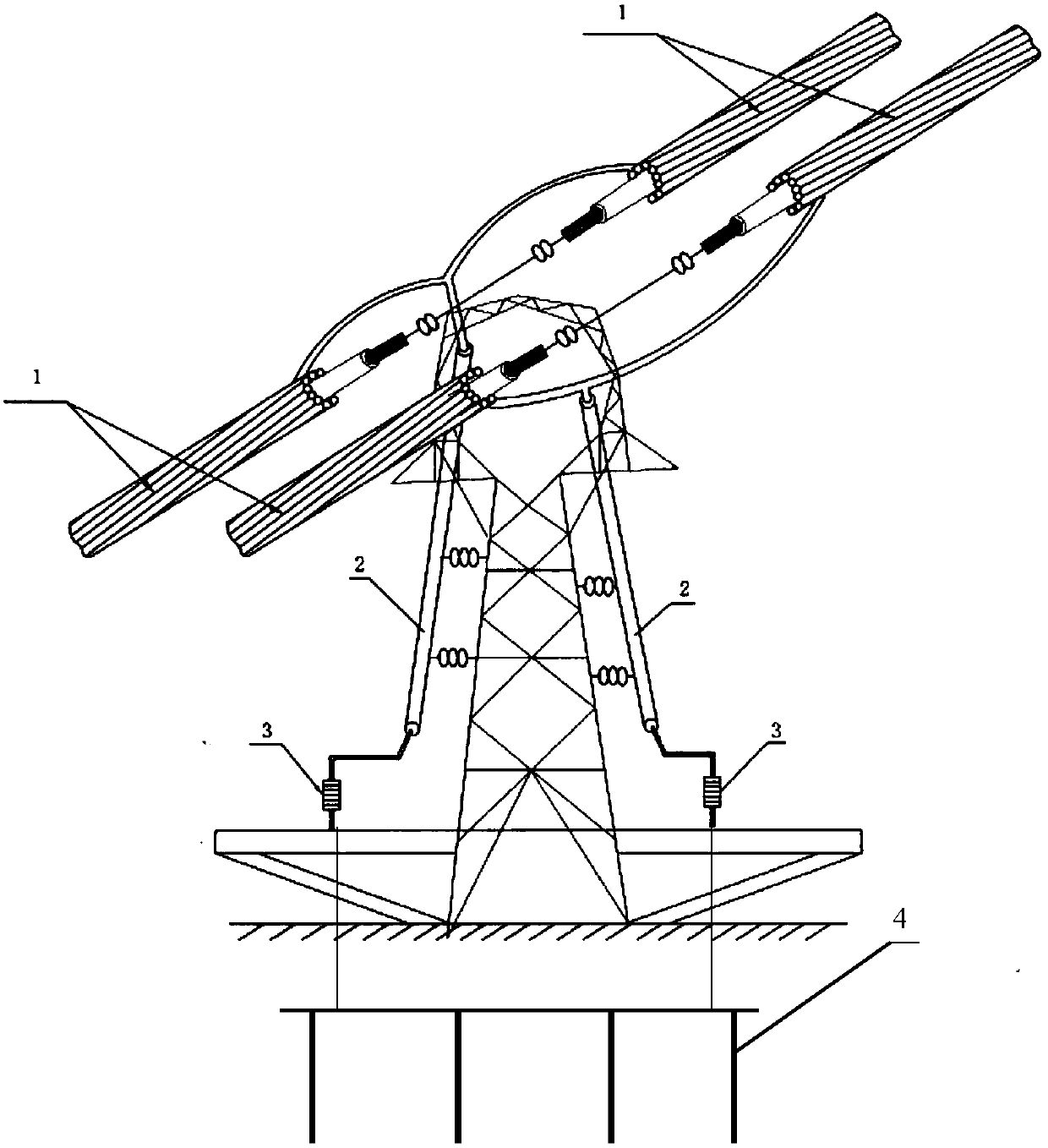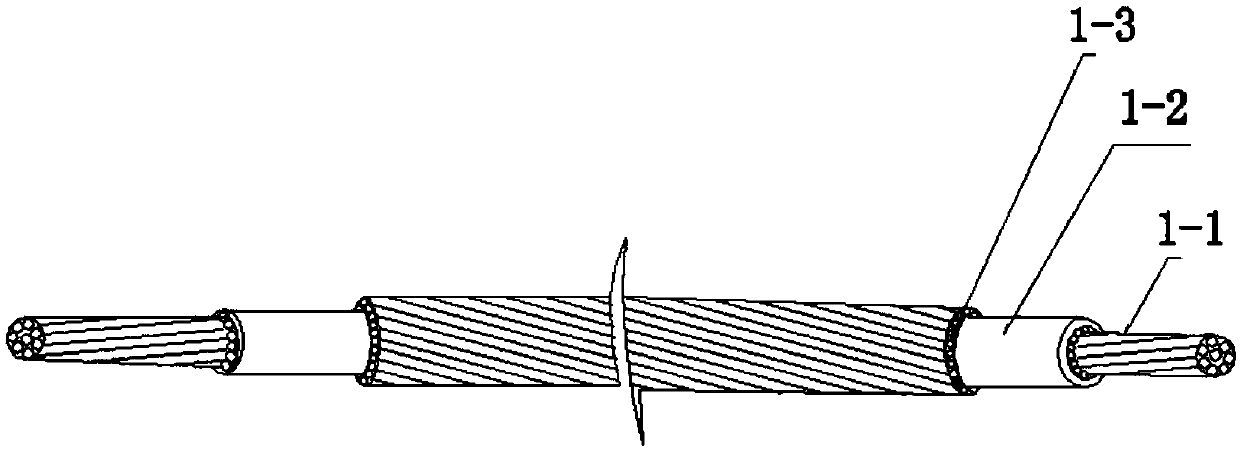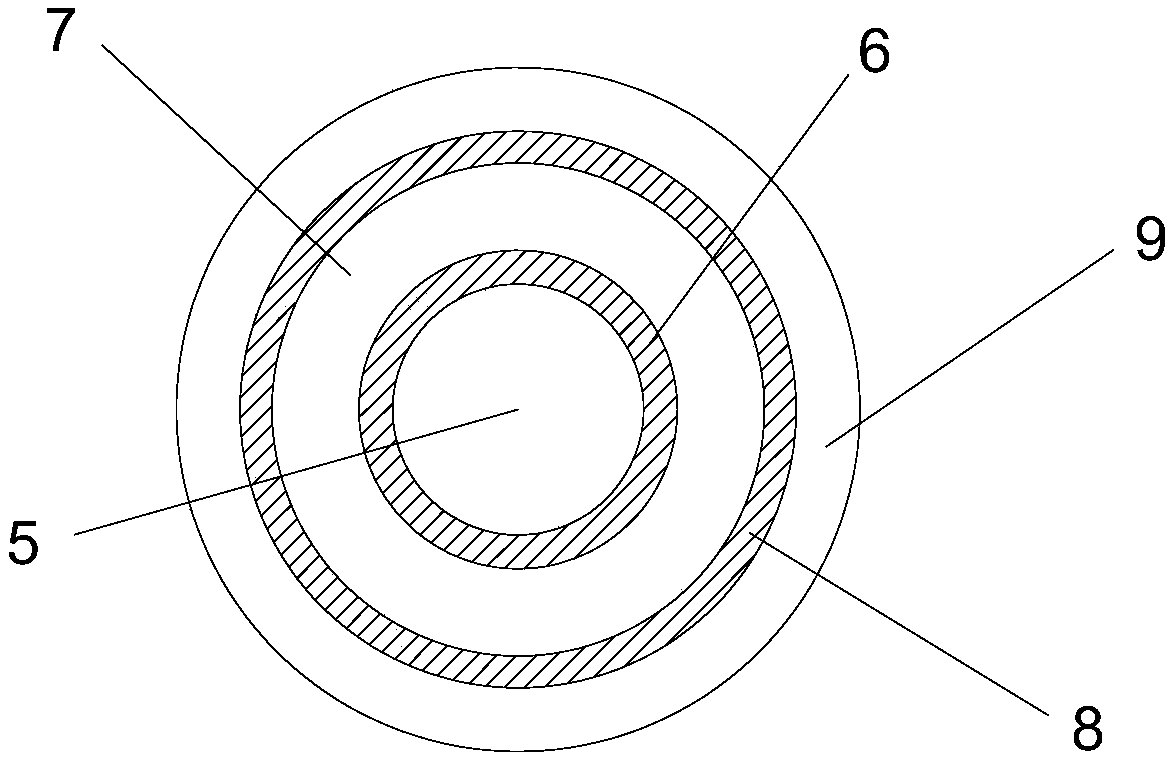Method and device for suppressing overvoltage of iron tower head when lightning strike of transmission line
A transmission line and overvoltage technology, applied in the installation of cables, the spatial arrangement/configuration of cables, circuits, etc., can solve the problems of breakdown, flashover along the surface of insulators, poor effect, etc.
- Summary
- Abstract
- Description
- Claims
- Application Information
AI Technical Summary
Problems solved by technology
Method used
Image
Examples
Embodiment 1
[0038] Such as figure 1 As shown, a method for suppressing the overvoltage of the tower head when the transmission line is struck by lightning comprises the following steps:
[0039] 1) Set the coaxial overhead cable 1 according to the wave impedance value of the overhead lightning conductor, and design the coaxial overhead cable 1 with a smaller wave impedance;
[0040] 2) Design a low-impedance coaxial cable down-conductor 2;
[0041] 3) Connect the coaxial overhead cable 1, the coaxial cable down conductor 2 and the ground lightning arrester 3 in sequence and install them on the iron tower, and the ground lightning arrester 3 is connected to the grounding network 4, wherein the coaxial overhead cable 1 is erected on the iron tower At the top, one end of the coaxial cable down conductor 2 is connected to the coaxial overhead cable 1, the other end of the coaxial cable down conductor 2 is connected to the ground lightning arrester 3, and the coaxial cable down conductor 2 is...
PUM
 Login to View More
Login to View More Abstract
Description
Claims
Application Information
 Login to View More
Login to View More - R&D
- Intellectual Property
- Life Sciences
- Materials
- Tech Scout
- Unparalleled Data Quality
- Higher Quality Content
- 60% Fewer Hallucinations
Browse by: Latest US Patents, China's latest patents, Technical Efficacy Thesaurus, Application Domain, Technology Topic, Popular Technical Reports.
© 2025 PatSnap. All rights reserved.Legal|Privacy policy|Modern Slavery Act Transparency Statement|Sitemap|About US| Contact US: help@patsnap.com



